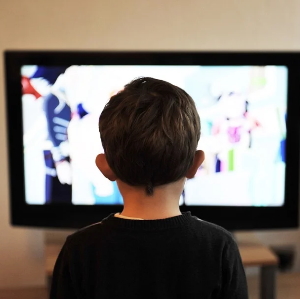Resolution of Breech Presentation Confirmed by Ultrasound Following Chiropractic
The Journal of Pediatric, Maternal & Family Health published the results of a case study on May 14, 2020, documenting the resolution of a breech presentation pregnancy following chiropractic care utilizing the Webster technique. The normal position for a fetus prior to birth is with the head downward, known as the "vertex position." When the fetus has the head upward, it is known as breech.
 According to the study
"The most common fetal
malposition is breech. About 30% of all fetuses will present as
breech before 28 weeks of gestation, but by the 34th week a
majority will flip to vertex presentation, the ideal position
for delivery." When discovered, most breech presentations
result in a cesarean birth instead of the vaginal one.
According to the study
"The most common fetal
malposition is breech. About 30% of all fetuses will present as
breech before 28 weeks of gestation, but by the 34th week a
majority will flip to vertex presentation, the ideal position
for delivery." When discovered, most breech presentations
result in a cesarean birth instead of the vaginal one.
The medical approach to turning a fetus when the mother is close to birth is a procedure known as external cephalic version (ECV). This is when the physician physically pushes the baby inside the mother in an attempt to return the baby to a normal position. This procedure is not without a high risk of complications and, according to the study, has a fairly low success rate.
In this case, a 28-year-old woman in the 33rd week of her pregnancy went to the chiropractor to see if she could get some help with her breech pregnancy. The woman had been seeing a midwife who was present when the woman came to the chiropractor. This was the womanís first pregnancy, and she had never experienced chiropractic care before. The woman was also suffering from hip pain on both sides.
A chiropractic examination was performed which included a visual postural inspection, range of motion examinations, spinal palpation, a temperature thermal scan, and a surface EMG scan of the womanís spine. The woman was also analyzed using the Webster Technique analysis.
With the determination of the presence of subluxations, specific adjustments utilizing the Webster technique were performed on the woman on a series of visits. After eight visits, the woman reported that the fetus had turned head down into the normal vertex position. The woman continued her chiropractic care through her pregnancy and was able to deliver her baby vaginally.
In the discussion section of the study, the authors explain chiropractic care for pregnancy by saying, "Chiropractic has a history of benefit to the pregnant woman. Chiropractic adjustments are intended to remove or reduce vertebral subluxations from the spine." They continue the explanation, "Chiropractors determine the subluxations through appropriate instrumentation, objective and subjective analysis. Chiropractic subluxations can have health alterations present with and without symptoms."
In their conclusion the authors wrote, "Over a one-month period the fetus turned from breech presentation to vertex presentation with the only change in care being the addition of chiropractic adjustments. After 7 chiropractic adjustments it was confirmed by ultrasound the fetus had moved to a vertex position. Continuing under chiropractic care the mother went on to have a normal vaginal birth without complications."
 It is obvious to everyone that there is an opioid
problem in the United States and around the world. This
awareness has caused a shift in the thought of how to best
address back issues. Because of this, the American College of
Physicians (ACP) updated their Clinical Practice Guideline for
the Treatment of Chronic Low Back Pain in 2017 to state that
their first recommendation for chronic lower back pain (LBP) was
to use spinal manipulation, exercise, and multidisciplinary
rehabilitation prior to pharmaceutical intervention as a first
line of defense. Only after several trials of unsuccessful
conservative management for LBP was medical treatment with
opioids to be considered.
It is obvious to everyone that there is an opioid
problem in the United States and around the world. This
awareness has caused a shift in the thought of how to best
address back issues. Because of this, the American College of
Physicians (ACP) updated their Clinical Practice Guideline for
the Treatment of Chronic Low Back Pain in 2017 to state that
their first recommendation for chronic lower back pain (LBP) was
to use spinal manipulation, exercise, and multidisciplinary
rehabilitation prior to pharmaceutical intervention as a first
line of defense. Only after several trials of unsuccessful
conservative management for LBP was medical treatment with
opioids to be considered. Recently, with the COVID-19 pandemic,
there has been much discussion about possible ways to help
defend yourself against getting the virus. Obviously, a
heightened immune system would go a long way to prevention of
infections in individuals and society in general. Chiropractors
have traditionally stated that they do not treat infectious
diseases. They have, however, stated that chiropractic care, by
correcting nerve system interference, does help bolster the
bodyís immune capabilities. This concept has drawn criticism
from both traditional critics of chiropractic and some forces
within the profession.
Recently, with the COVID-19 pandemic,
there has been much discussion about possible ways to help
defend yourself against getting the virus. Obviously, a
heightened immune system would go a long way to prevention of
infections in individuals and society in general. Chiropractors
have traditionally stated that they do not treat infectious
diseases. They have, however, stated that chiropractic care, by
correcting nerve system interference, does help bolster the
bodyís immune capabilities. This concept has drawn criticism
from both traditional critics of chiropractic and some forces
within the profession. The results of the study showed
that there was an increase in the number of meals eaten per
day by the children while at home.
The results of the study showed
that there was an increase in the number of meals eaten per
day by the children while at home.